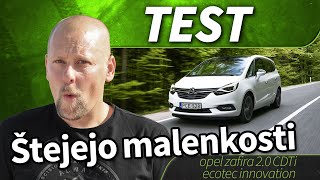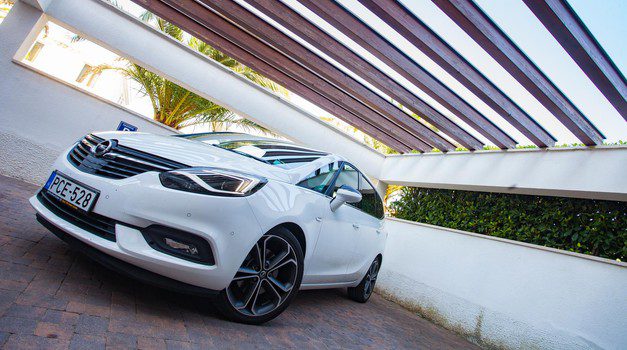
Extended test: Opel Zafira 2.0 CDTI Ecotec Start / Stop Innovation - economical but at the mercy of
In an extended test of the Opel Zafira, we found out that this is an old-school limousine van, which, despite its merits, unfortunately, is increasingly being removed from crossovers. It's the same with its engine, which is now completely dependent on the decision makers.

Sasha Kapetanovich
We're talking, of course, about a turbodiesel four-cylinder engine, with the emphasis on being a diesel engine. Let's remember that at one time we all - and many still love - loved to use this type of engine, which is still popular today, especially among those who travel very long distances in cars, since it provides economical driving and relatively long distances. and relatively long distances. Infrequent visits to gas stations. In the end, this is also confirmed by consumption, as the test Zafira consumed an average of 7,4 liters of diesel fuel per 100 kilometers during daily trips of various types, and on a more moderate normal lap it was even more economical with a consumption of 5,7 liters per 100 km. Moreover, during a trip to Germany, when the engine was running in a fairly optimal range, it consumed up to 5,4 liters of fuel per 100 kilometers.

So what's the problem and why are diesel engines losing popularity? Their decline was mainly due to the scandal associated with the manipulation of exhaust gas measurements, which were allowed by some manufacturers. But that's not all. Fraud would probably not have been possible without ever stricter regulations forcing car and motorcycle manufacturers to resort to increasingly expensive exhaust gas cleaning procedures, even without fraud. It has long been known that particulate filters remove harmful soot from exhaust gases that forms in combustion chambers when the fuel mixture burns worse and the remaining exhaust gases become more difficult to clean. These are mainly toxic nitrogen oxides, which are formed when excess oxygen in the combustion chamber combines with nitrogen from the air. Nitrogen oxides are converted in the catalysts into harmless nitrogen and water, which requires the introduction of urea or its aqueous solution under the trade name Ad Blue, which was also necessary for testing Zafira.

So what would be your advice not to buy a Zafira with a turbodiesel engine? Not at all, as this is a car with a very smooth and relatively quiet engine that, with 170 “horses” and 400 Newton meters of torque, provides a very smooth and comfortable ride for short and long distances, as well as being economical. But if you're buying a car today, it's a good idea to think about how much value it will have when you try to sell it five or six years from now. Given current developments, it may make more sense in the long run to buy a car with a turbo-petrol engine of some kind, or even a hybrid. Of course, predicting the future is not easy, and the situation can change quickly.
Opel Zafira 2.0 TDCI Ecotec Start / Stop innovation
Basic data
| Base model price: | 28.270 € |
|---|---|
| Test model cost: | 36.735 € |
Costs (per year)
Technical information
| engine: | 4-cylinder - 4-stroke - in-line - turbodiesel - displacement 1.956 cm3 - maximum power 125 kW (170 hp) at 3.750 rpm - maximum torque 400 Nm at 1.750-2.500 rpm. |
|---|---|
| Energy transfer: | front-wheel drive engine - 6-speed manual transmission - tires 235/40 R 19 W (Continental Conti Sport Contact 3). |
| Capacity: | top speed 208 km/h - 0-100 km/h acceleration 9,8 s - average combined fuel consumption (ECE) 4,9 l/100 km, CO2 emissions 129 g/km. |
| Mass: | empty vehicle 1.748 kg - permissible gross weight 2.410 kg. |
| External dimensions: | length 4.666 mm – width 1.884 mm – height 1.660 mm – wheelbase 2.760 mm – trunk 710–1.860 58 l – fuel tank XNUMX l. |
Our measurements
| Measurement conditions: T = 23 ° C / p = 1.028 mbar / rel. vl. = 55% / odometer status: 16.421 km | |
| Acceleration 0-100km: | 9,9s |
|---|---|
| 402m from the city: | 17,2 years ( 133 km / h) |
| Flexibility 50-90km / h: | 8,1 / 13,8s (IV/V) |
| Flexibility 80-120km / h: | 9,5 / 13,1s (Sun./Fri.) |
| Braking distance at 100 km / h: | 39,5m |
| AM table: | 40m |
| Noise at 90 km / h in 6rd gear | 61dB |
